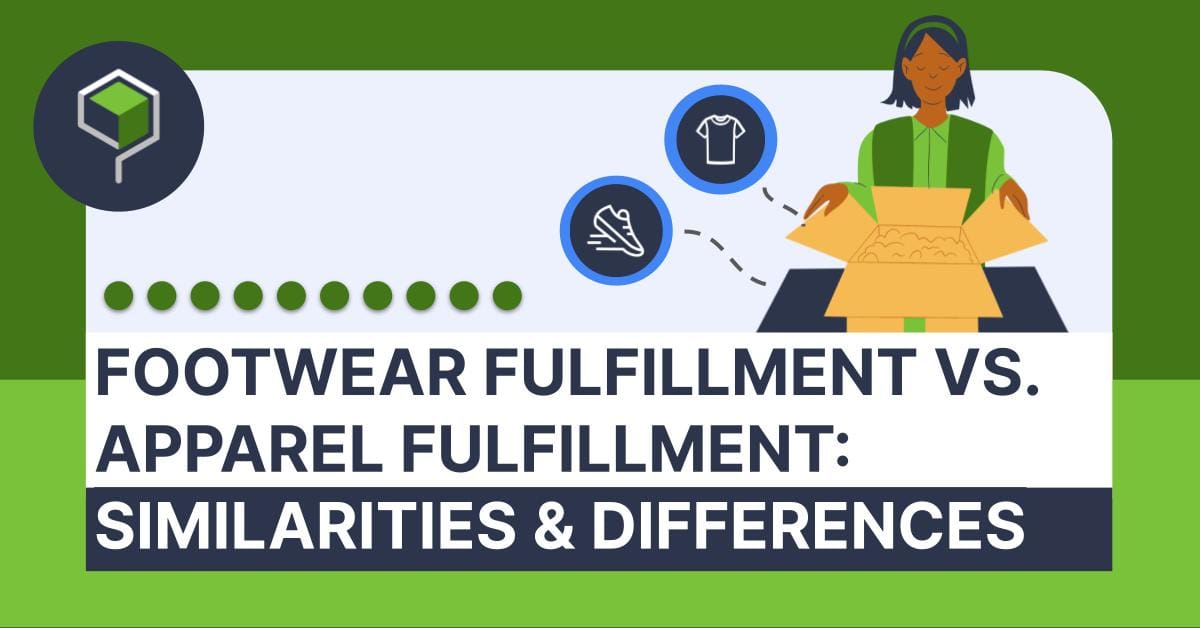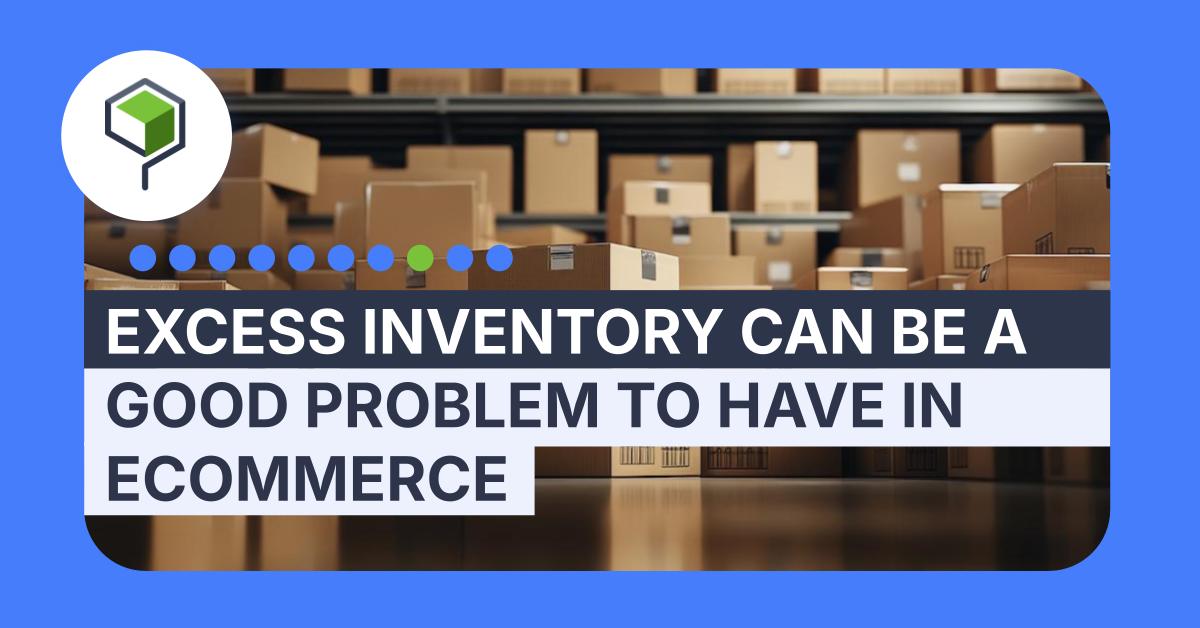Footwear Fulfillment vs. Apparel Fulfillment: Similarities and Differences

As two of the biggest product categories in eCommerce, footwear and apparel take up their fair share of airtime in discussions about effective fulfillment and customer experience.
If an eCommerce fulfillment services provider wants to build a name for itself, offering dedicated services for apparel brands is a must. This includes everything from value-added services, like re-ticketing or hanging garments, to apparel fulfillment centers that are strategically located close to major ports of entry for incoming inventory.
As divisions of the fashion industry, footwear and the apparel industry are often talked about interchangeably. However, these categories (and services) are very distinct from one another when it comes to eCommerce fulfillment. While they share a lot of similarities, how footwear and apparel are different can create serious inefficiencies within the fulfillment process if they are not properly considered.
Online merchants selling apparel and footwear products – or one or the other – require different strategies when it comes to inventory management, storage, shipping, returns management, and more. By understanding the unique requirements of these two product categories, your brand is much better positioned to choose a fulfillment partner who can provide the right fulfillment services in the right way, ensuring operational success and better customer satisfaction.
In this blog, we’re going to explore the similarities and differences between footwear fulfillment and apparel fulfillment – and how ShippingTree tailors the right strategy for your product assortment.
The similarities between apparel fulfillment and footwear fulfillment
High SKU counts
The biggest similarity between footwear and apparel – and what makes managing inventory in both of these product categories so challenging from a fulfillment standpoint – is the sheer number of SKU variations compared to other industries. Any one product, whether that’s a t-shirt or a pair of stilettos, demands a full-size range in every available color.
For example, if a t-shirt is available from size XS up to XXL and comes in three colors, you’re looking at over 20 SKU variations that need to be tracked individually in your inventory management system. Multiply this by hundreds of garments or footwear styles, and it’s easy to see why SKU counts balloon into the thousands, even at small footwear or apparel companies.
Seasonality
The footwear and apparel industries are some of the most trend-prone in eCommerce, with the time of year and fashion trends dictating popularity for different styles or colors. Consumer demand can change with little warning, with a particular SKU hot one week, but not the next.
Brands, and in turn their 3PLs, have to anticipate these preferences to avoid developing excess inventory or dead stock that needs to be cleared to make room for new merchandise. This is made more challenging by the short product lifecycles for merchandise in different regions. Flip-flops might be worn year-round in Florida, but not in Minnesota, meaning that inventory levels and replenishment need to be adjusted accordingly to cater to regional customer expectations and preferences.
Desire for memorable experiences
Apparel and footwear, just like many other consumer categories in eCommerce, are prone to the growing consumer desire for more exclusive, customized solutions and unique experiences that differentiate brand storytelling. To ensure customer satisfaction and loyalty, brands need to think ‘outside the box’ and look for ways to stand out from the standard eCommerce delivery. Investments like custom packaging, freebies, and inserts are valuable branding options that help to build a rapport with your customer at the moment of delivery and increase repeat purchases – essential within such competitive verticals.
The differences between footwear fulfillment and the apparel fulfillment process
We understand how apparel fulfillment and footwear fulfillment face similar challenges. But what about the differences that demand different approaches to order processing, order fulfillment and reverse logistics?
Footwear in particular carries some unique challenges that make it distinct from other apparel items, such as clothing or accessories. Overlooking the product characteristics that contribute to these challenges can result in online retailers struggling to meet customer demand or offer quality assurance, as well as spending far more than necessary on shipping.
Here are the key differences between footwear and apparel fulfillment that eCommerce businesses need to be aware of to find the right footwear or apparel fulfillment service companies for their needs:
Storage configurations
Unlike apparel items, which can be folded or hung relatively easily for condensed storage, shoes are much bulkier and often require individual boxes to house accessories or product information, which takes up a lot more space within fulfillment centers.
Depending on the number of footwear styles you have and your order volume, footwear fulfillment typically demands far more square footage for storage and picking than apparel order fulfillment does. This means larger warehouses, and in turn, more expensive leases to manage inventory and coordinate order fulfillment effectively.
Inventory Management: Handling and cartonization
Similarly to warehouse storage, footwear carries more considerations for safe shipping and delivery than apparel. Clothing is soft and flexible, meaning it’s far less prone to damage in transit. It can also be easily folded to streamline package size and fit into smaller containers or mailer envelopes, which carry cheaper shipping costs.
Footwear, especially high-end or delicate designs featuring heels or straps, is more prone to damage during handling and shipping. This makes proper handling procedures in the warehouse extremely important to protect shoes from scuffs or tears. Heavier, protective packaging is also necessary, which can result in higher shipping costs when combined with the additional weight and bulk of the product itself. Using the right shipping method and container size is important to help reduce these costs as much as possible while still ensuring safe delivery.
Return rates
Clothing is well-known for its staggering return rates in eCommerce, thanks to the difficulty of buying online without being able to try and view garments first. According to Coresight Research, the average return rate for online apparel purchases is 24.4%, with size/fit (53%) and color (16%) cited as the most common reasons for returning.
These revenue losses have caused many apparel and footwear brands to clean up the online shopping experience in a bid to reduce returns, such as investing in better product photography and more in-depth sizing information. In recent years, the growth of technology solutions like Augmented Reality has helped shoppers choose the right size and fit before they purchase.
Interestingly, data shows that the footwear industry is equally vulnerable – if not more so, to these high return rates. According to Statista, certain types of footwear, such as backless slippers and ballet flats, have higher return rates than garments such as pants and jackets.
While VR and AR technology is making headway in reducing returns for clothing, we don’t yet have the technology to replicate the experience and feel of trying on footwear. It’s likely that if apparel returns start to level out, footwear returns will continue at stubbornly high levels. This makes effective return management even more essential in footwear and apparel fulfillment in the years to come.
Understanding the unique challenges of apparel fulfillment and footwear fulfillment makes all the difference when it comes to choosing a 3PL (third-party logistics) provider who can meet the demands of your inventory while optimizing for cost and performance and delivering exceptional customer service. In addition to familiar challenges such as large, dynamic SKU counts and seasonal variation, storage, and returns management strategies will differ depending on your product assortment.
A dynamic eCommerce fulfillment provider that specializes in fast-growing eCommerce brands, ShippingTree understands the differing demands of apparel and footwear fulfillment services – and that’s why we’ve given them dedicated landing pages on our website! Whether you’re handling 500 orders per month or 5000+, ShippingTree’s scalable fulfillment services can grow with your business and accommodate inventory changes.



